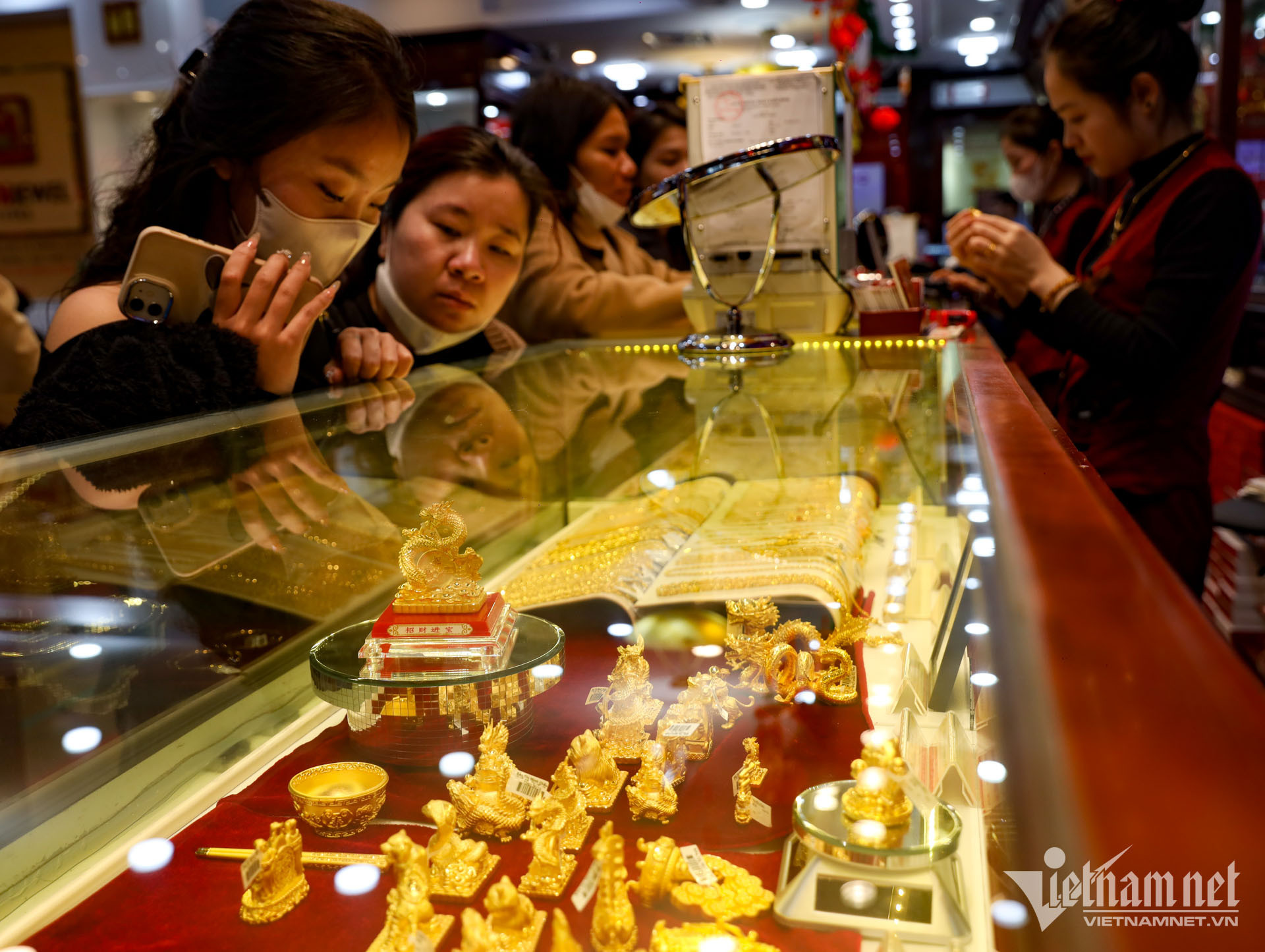
Designing gold trading exchange model
Nguyen Quang Huy from Finance and Banking Faculty at Nguyen Trai University, said a national gold trading exchange would make Vietnam’s gold market more transparent, reducing the influence of a few large enterprises.
With an exchange, transactions would be standardized, recorded, and monitored by authorities, preventing speculation and price manipulation.
Huy noted that without the state’s monitoring, gold market fluctuations could prompt capital outflows from banks, putting pressure on liquidity and interest rate management. Once a gold exchange is established, it would be easier for the state to track transaction volumes, and gauge market sentiment, thus proactively shaping monetary and exchange rate policies.
“A modern, well-governed gold exchange with transparent transactions would lay the foundation for Vietnam’s integration into the global gold market, attracting foreign gold investment funds and institutional investors. This is a long-term step to elevate Vietnam’s commodity financial market,” Huy said.
He added that the exchange would prompt the demand shifting from physical gold to gold accounts, electronic trading, and secure custody, thereby, reducing social costs for storage and protection while curbing dollarization and goldenization in transactions, saving national resources.
To run an effective national gold exchange, Huy suggested that Vietnam can refer to Shanghai Gold Exchange (SGE), a state-backed but market-driven platform involving banks and major gold enterprises.
“The government could ask the State Bank of Vietnam (SBV) and the Vietnam Commodity Exchange to design a national gold exchange, linked with major commercial banks to ensure liquidity and regulate transactions,” Huy proposed.
Also, it is necessary to standardize the quality of gold; build a network of members including banks, gold and gemstone companies and reputable financial institutions; build a transaction, payment, and deposit process towards electronic transactions and not using physical gold directly.
In particular, it is necessary to use modern technology, ensuring real-time transaction processing, and accurate and secure data management. There is a mechanism for clearing, deposit, and transaction margin limits to control the risk of price fluctuations.
Huy also emphasized the need to issue a law or decree on the operation of gold exchanges. SBV and the Ministry of Finance (MOF) need to have a mechanism for continuous monitoring and intervention when necessary to avoid speculation and price manipulation.
Narrowing domestic-international gold price gap
Le Xuan Nghia, a member of the National Financial and Monetary Policy Advisory Council and former Vice Chair of the National Financial Supervisory Commission, suggested Vietnam emulate China’s model, including both physical gold exchange and a gold certificate exchange.
In China, about 13-14 entities, large state-owned banks, select foreign commercial banks, and gold businesses, are licensed to import and distribute gold through the physical exchange. The exchange sets wholesale prices daily based on global market prices plus import taxes. Wholesalers sell gold to retailers, who then distribute to consumers.
Nghia suggested that in the immediate time, Vietnam should establish a physical gold trading exchange for wholesale transactions, with wholesale buyers supplying retailers and small gold shops, like in China.
“A wholesale physical gold exchange, like China’s, would resolve all problems, including short supply, align domestic prices with international ones. It would ensure transparency, curb fraud, speculation, and market manipulation by gold companies, while allowing the state to track gold inflows and dollar outflows,” Nghia said.
Huy suggested that to narrow the gap between international and domestic gold prices, Vietnam should pilot allowing a few more large, reputable entities to import and produce gold bars, with periodic evaluations before expanding.
“Easing the monopoly of a few large enterprises in gold bar production and allowing reputable commercial banks and businesses to participate in gold imports and trading, under strict oversight, would help,” he said.
“With a gold exchange, listed prices would reflect actual market supply and demand, creating a standard price benchmark and limiting price control by a few enterprises,” Huy proposed.
Additionally, the central bank could establish a national gold reserve fund, similar to foreign exchange reserves, to stabilize prices when needed. Encouraging gold account transactions over physical gold would reduce circulation costs, enhance liquidity, and improve price control.
In fact, the idea of setting up a gold exchange was once raised by National Assembly deputies in late 2024 at a National Assembly’s session.
In response, SBV Governor Nguyen Thi Hong, said to establish a gold exchange, investment in infrastructure is needed. Vietnam is not a gold producing country like China.
Therefore, to have enough gold for trading, Vietnam must import from the international market.
"The establishment of a gold exchange requires the State Bank to coordinate with ministries and branches to research and assess the impact very carefully to advise and propose to the Government at a time appropriate to the context and conditions of Vietnam," Hong analyzed.
Manh Ha